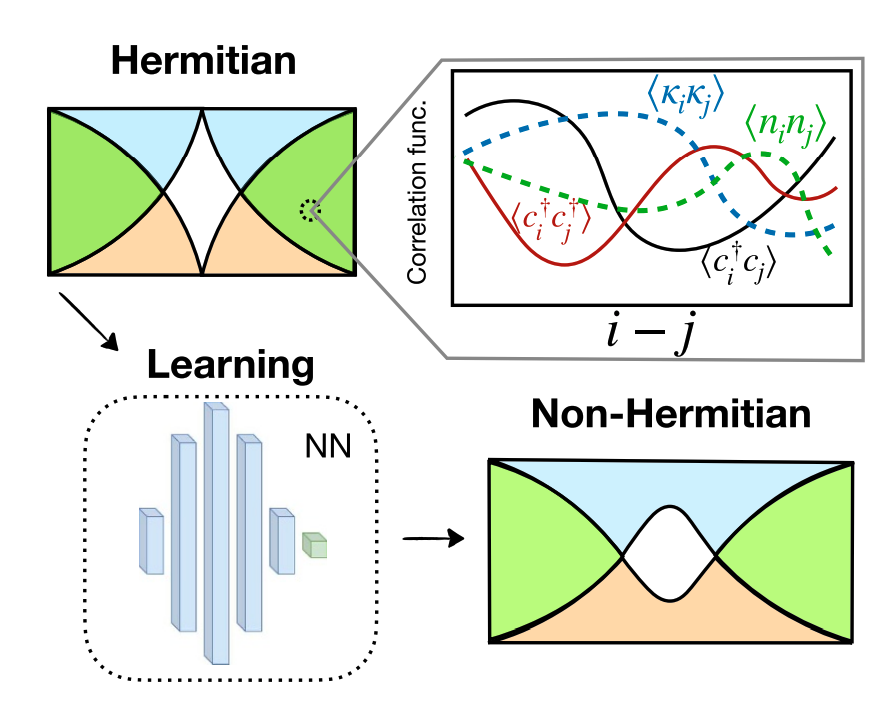Researchers from the Max Planck Institute for the Science of Light and Aalto University have demonstrated that machine learning can identify phase boundaries in non-Hermitian many-body models, a complex field in quantum physics. The study used a machine learning methodology known as transfer learning, which was trained on Hermitian correlation functions and then applied to non-Hermitian models. The findings suggest that machine learning could be used to explore other areas of quantum many-body physics and potentially lead to new insights and breakthroughs. However, further research is needed to explore the applicability of this approach.
What is the Role of Machine Learning in Quantum Many-Body Physics?
Quantum many-body physics is a complex field that involves the study of interacting systems. Identifying phase boundaries of these systems is a crucial step in understanding quantum many-body models. However, the numerical challenges and scarcity of analytical solutions make obtaining phase boundaries in non-Hermitian many-body models difficult.
In recent years, machine learning methods have emerged as a potential strategy to learn phase boundaries from various observables without having access to the full many-body wave function. A study conducted by Sharareh Sayyad from the Max Planck Institute for the Science of Light and Jose L Lado from the Department of Applied Physics at Aalto University demonstrates that a machine learning methodology trained solely on Hermitian correlation functions allows identifying phase boundaries of non-Hermitian interacting models.
How Does Transfer Learning Apply to Quantum Many-Body Physics?
The researchers used a machine learning methodology known as transfer learning. This approach involves training a machine learning model on one task and then reusing that model on a different but related task. In this case, the machine learning model was trained on Hermitian correlation functions and then redeployed to non-Hermitian models without further training.
The study results show that Hermitian machine learning algorithms can be redeployed to non-Hermitian models to reveal non-Hermitian phase diagrams. This establishes transfer learning as a versatile strategy to leverage Hermitian physics to machine learning non-Hermitian phenomena.
What is the Significance of this Research?
The findings of this research have significant implications for the field of quantum many-body physics. The ability to use machine learning methodologies trained on Hermitian correlation functions to identify phase boundaries of non-Hermitian interacting models could open up new avenues for exploring the phase diagrams of many Hermitian interacting systems.
Furthermore, the successful application of transfer learning in this context demonstrates the potential of machine learning as a tool for tackling complex problems in quantum many-body physics. This could lead to developing more efficient and effective methods for studying interacting systems.
What are the Future Implications of this Research?
The successful application of machine learning methodologies in this study suggests that these techniques could be used to explore other areas of quantum many-body physics. For example, machine learning could identify various phases of non-Hermitian noninteracting systems or optimize the performance of computational simulations.
Moreover, transfer learning could be extended to other areas of physics, potentially leading to new insights and breakthroughs. As computational methods for Hermitian interacting models are numerically less demanding and more stable than their non-Hermitian counterparts, learning phase diagrams of non-Hermitian many-body systems from Hermitian correlated models could open up a promising strategy to leverage many-body methods developed for interacting Hermitian models.
What are the Challenges and Limitations of this Research?
While the results of this study are promising, there are still challenges and limitations to be addressed. For instance, the scarcity of exactly solvable models and the inability of conventional Hermitian many-body methods to be directly applied to the non-Hermitian limit pose significant challenges.
Moreover, while the machine learning methodology used in this study was able to identify phase boundaries of non-Hermitian interacting models, it is unclear whether this approach would be effective for other types of quantum many-body models. Further research is needed to explore the applicability and effectiveness of machine learning methodologies in other areas of quantum many-body physics.
An article titled “Transfer learning from Hermitian to non-Hermitian quantum many-body physics” was published on January 26, 2024, in the Journal of Physics: Condensed Matter. The authors of this study are Sharareh Sayyad and José L. Lado. The research can be accessed through the DOI: https://doi.org/10.1088/1361-648x/ad22f8.

